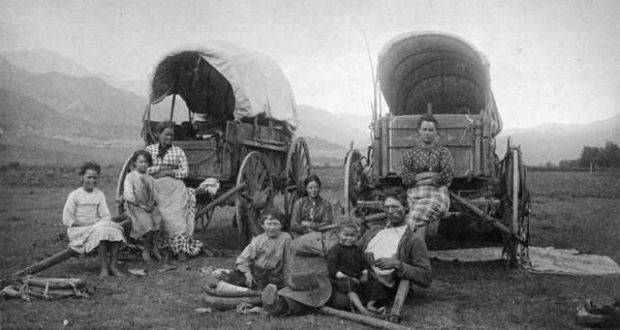
What does your meals provide imply for winter?
Doubtless not a lot.
You received’t see any recent produce equipped domestically, however fashionable world provide networks can deal with that. Whether it is too chilly to develop native fruit and veggies they’ll merely be imported from hotter climates – that’s why you should buy oranges all year long.
Issues have been very completely different for the pioneers, going through harsh winters on American Western frontiers. Primitive transport methods constructed on horse-drawn wagons restricted meals motion – even when the railways got here alongside, there have been nonetheless critical limits to what might be transported with out refrigeration.
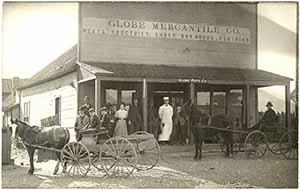
City shops offered just a few staples, comparable to flour, salt, sugar and rice, however individuals principally lived on what they themselves and their neighbors produced. In winter, the choices closed down, as nothing might be developed for months. The colonists needed to spend many of the summer season and fall constructing meals shops for the approaching chilly months to outlive earlier than they may begin planting once more within the spring.
Most meals is not going to retain for months with out someway being preserved. There are exceptions – the dry items will final a very long time in the event you hold them protected against humidity and vermin. Nevertheless, virtually anything wanted preservation. The pioneers used varied strategies for this, and for lengthy intervals they have been capable of retailer fairly a variety of meals.
The majority of a meals stockpile in winter was typically carbohydrates, significantly flour. Very a lot of it was additionally greens and fruit. Meat typically had a decrease precedence, since sport might nonetheless be hunted in winter, however ought to nonetheless be protected as a lot as potential; searching will not be at all times efficient, and will be harmful in extreme climate circumstances. Let’s take a look at simply what the pioneers held, and the way they did it, in additional element.
Dry Items
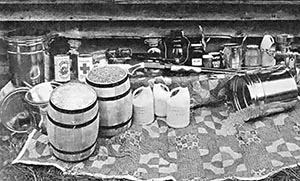
Flour was usually bought or bartered from the closest buying and selling publish and saved in massive quantities – households would plan to enter the winter with at the least 100 kilos of flour per grownup, and an equal discount for every boy. Flour was normally delivered in sacks so it needed to be protected in opposition to humidity and pests. Sacks could be positioned on a low platform elevated off the ground; the storeroom could be periodically inspected for mouse holes or indicators of any infestation and usually sprayed generously with traps. Flour can even be held in bottles. These have been additionally saved off the ground, however protected significantly better in opposition to vermin than a sack.
An extra staple was the dried beans. They’re supply of protein, if correctly saved, final for years and are very proof against pests. Some kilos of beans have been a typical a part of winter stockpiles per individual. They have been normally held in sackcloths like flour, and raised off the ground. The identical applies to rice; it was not as widespread as beans, however many settlers would add just a few sacks to their retailer of dry items.
Associated: 50 Days of ‘Survival’ Energy with Rice and Beans
A small sack of salt was important. In addition to being the essential seasoning it’s additionally helpful for preserving extra perishable meals. Lastly, sugar. Within the nineteenth century this got here as a stable sugar loaf, normally formed like a cone with a rounded finish. Sugar nips, pincers with heavy sharp blades, have been used to chop off items as wanted. Sugar was an costly luxurious, and used sparingly.
Root greens
If saved cool, potatoes, beets, carrots, turnips and the vast majority of different root greens will final a very long time. The most typical approach of storing them within the family was via a root cellar. These might be utterly underground, beneath the home or dug into a close-by hillside. Alternatively they might be partly underground and coated by a thick layer of earth with the roof and partitions. Some have been even absolutely above floor, normally the place the bottom was too rocky or moist to dig simply.
A dense earth insulation holds a root cellar at a cool temperature which is comparatively fixed. It protects meals from each winter freezing, and summer season warmth. Root vegetable crops could be saved in containers or barrels of wooden, and would final months. Cabinets within the cellar may be used to retailer canned items and different merchandise in a cool, darkish location that did finest.
A clamp was one other selection for the massive vegetable crops. Take an oblong trench a few foot deep, to create a lock. Fill the underside with brush layer and twigs, then straw layer.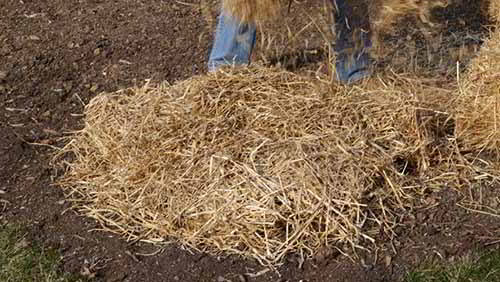
Stack the roots on the straw, forming them right into a slim pile as much as about six toes excessive.
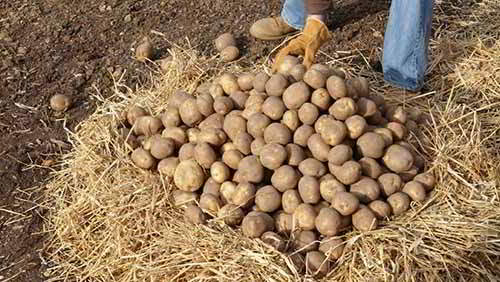 Then cowl the pile with straw and canopy it with the soil faraway from the ditch.
Then cowl the pile with straw and canopy it with the soil faraway from the ditch.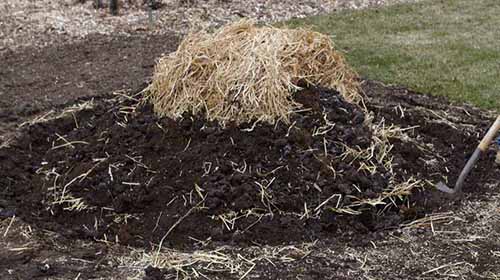
Dig one other small trench all around the clamp to assist with drainage, and throw the soil from that on too. It’s best to goal to have a few six-inch layer of soil utterly overlaying the clamp.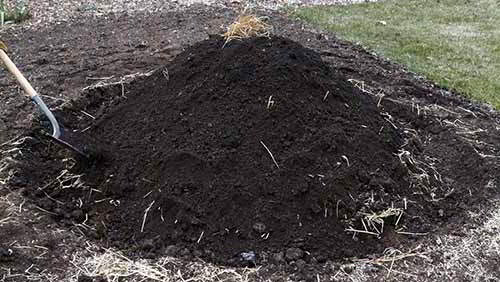
Open one finish of the clamp to take away greens and take out enough to replenish your root cellar, then reseal with straw and earth.
Clamps function finest when the temperature stays under zero for lengthy intervals, in very chilly climate. It’s finest to skip the preliminary trench in moist winter circumstances, and construct the clamp straight on the bottom.
Fruit and Greens
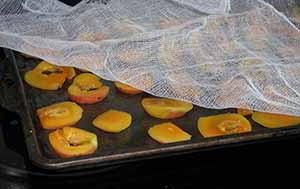
Some greens and fruits would get air-dried by thinly slicing them, placing them on a rack after which leaving them to dry for a number of days. Racks could be coated with cheesecloth to maintain bugs and birds away from their contents, and typically the slices could be rotated to verify they dried evenly. When almost all the moisture had evaporated, the slices could be packed in bottles and positioned within the root cellar or pantry.
Canning was a significant exercise each fall. Pioneer kitchens full of jars and steam have been harvested as fruit, corn and inexperienced greens have been harvested. There have been no canners, however pots would warmth up in an enormous pot on the range or fire. As soon as winter got here pantries would produce hundreds of frozen meals, possibly tons of of jars of preserved meals.
Meat
Each time potential within the winter pioneers would hunt or fish, however typically they returned empty-handed. Once they have been blowing a blizzard they need to not exit in any respect. As a lot as potential could be preserved to make sure they at all times had meat at their disposal.
All through the autumn, they’ll kill surplus livestock. Older poultry, the majority of pigs, surplus bulls – one thing definitely worth the fodder and the dedication to maintain it alive via winter. Offal, which is tough to protect, could be eaten directly, many of the meat was processed and added to the winter shops.
Skinny-sliced beef needs to be air-dried and made into jerky, which might be eaten or soaked as a tricky, compact path meals for cooking. May be salted beef and pork. The easiest way to do that was to rub the meat with heat salt after which pack it in barrels, including extra salt as meat layers have been added to fill the gaps. Moreover, meat could also be packed within the containers, after which lined with salted brine. Correctly salted meat would final for months however it needed to be soaked to scrub away extra salt earlier than cooking.
Smoking had been a typical treatment for pork. Not everybody had a smokehouse, so they’d take their pork to somebody who did, buying and selling a portion of the meat for the power for use. Practically each household slaughtered at the least one pig within the fall, so the rigorously smoked hams and bacon in frontier pantries have been a typical sight. Additionally, if the setting impeded searching, meat could be out there so as to add taste and protein to the menu.
Associated: How To Pickle Meat
Cheese
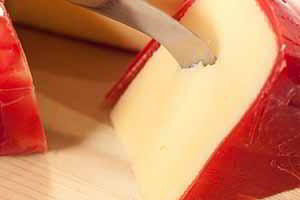
Dairy items are extremely perishable and onerous to retailer with out cooling, however the pioneers managed to retailer some. Butter could also be canned however cheese is the simplest to retailer. The paraffin wax can protect virtually each kind of onerous cheese. The preferred methodology of melting the wax was then rubbing the cheese with it. There have been two coats added to verify that there have been no openings wherein air might get in. When wrapped in wax, the cheese will be saved in a cool place for lengthy intervals. Not solely was it preserved however its taste would mature and strengthen.
Eggs
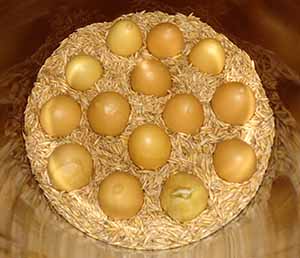
Eggs coated in bees wax saved in a crock full of oats
Hens lay extra as they get extra sunshine, so there have been few and much between eggs in winter. Paraffin wax has turn out to be useful right here, too. Surplus late summer season and fall eggs might be brushed or coated with molten wax, gathered as quickly as they have been laid; like butter, they acquired two coats. That gave them an hermetic seal stopping micro organism from rising inside and spoiling them. A waxed egg will final six months, or possibly even longer in a cool place. The pioneers would strip the wax from the egg earlier than utilizing it, and put it in a bowl of chilly water. It was solely superb if it sunk to the underside; if it had floated it will have spoiled. The extra time it takes between laying and waxing, the extra probably it’s that the egg spoils.
Associated: The best way to Protect Eggs with Waterglass
The pioneers haven’t benefited from fashionable supermarkets however they’ve been specialists in sustaining a wide variety of meals. Throughout the starting of winter, a household on the border would have tons of of kilos of meals in retailer, they usually used it wisely-waste was a critical matter. Nature took sufficient of a toll; plus pests or spoilage might lose 10% or extra.
Households would save and retailer as a lot as they wanted for the winter – then stick with it smoking and salting canning, packing away what they may. Any surplus was a precaution in opposition to unexpected losses-animals breaking right into a clamp or a critical infestation of the foundation cellar with pests. Households would additionally contribute the excess to neighbors who had misplaced their financial savings – in spite of everything, they might be those who wanted the assist subsequent season.
We’re blessed by refrigeration and fashionable buying, but when the SHTF all that can be gone in days. By that time, those that can fall again on the talents of our pioneer ancestors would be the ones who will be capable of see the primary fall of snow and look ahead to spring. And in the event you don’t know the way to put up just a few hundred kilos of canned meals this can be a protracted, tough winter.

